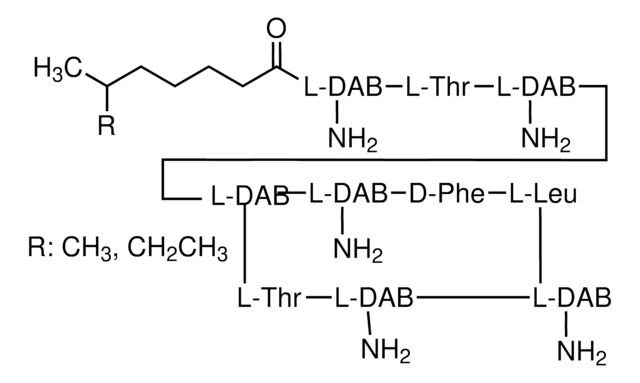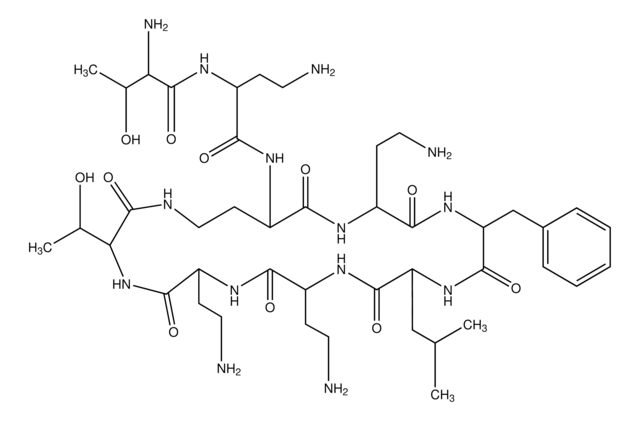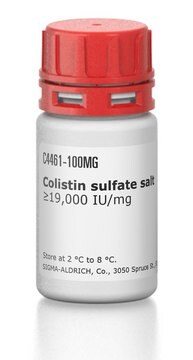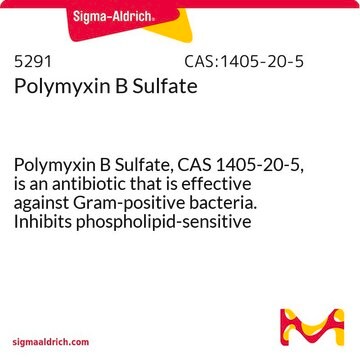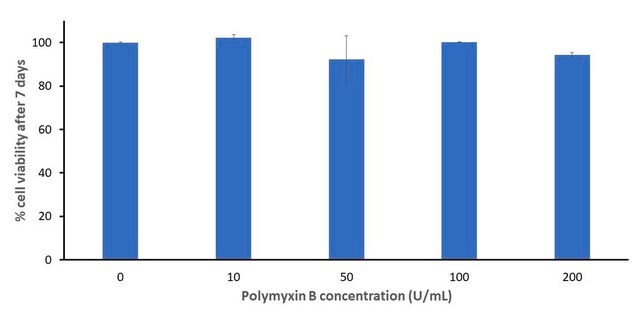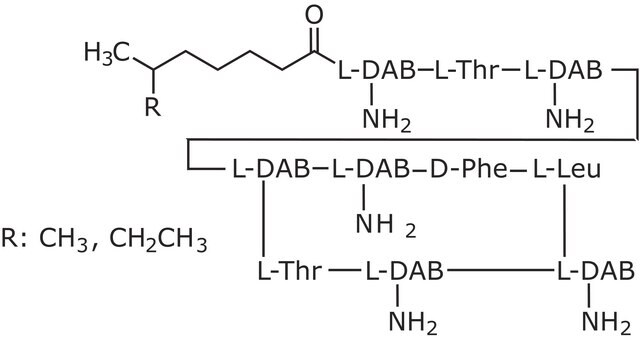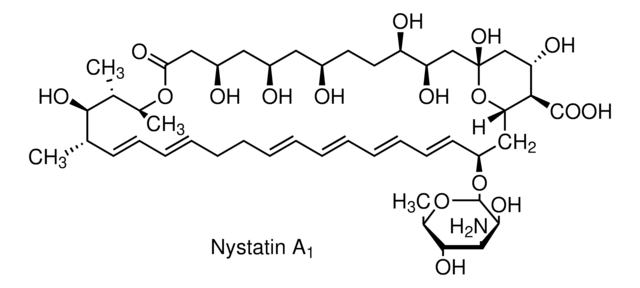P4932
Polymyxin B sulfate salt
powder, non-animal origin, suitable for cell culture, BioReagent
Sinónimos:
Polymixin, Polymixin B, Polymixin B sulfate
About This Item
Productos recomendados
product name
Polymyxin B sulfate salt, powder, BioReagent, suitable for cell culture
product line
BioReagent
Quality Level
form
powder
potency
≥6,000 USP units per mg
technique(s)
cell culture | mammalian: suitable
antibiotic activity spectrum
Gram-negative bacteria
mode of action
cell membrane | interferes
storage temp.
2-8°C
SMILES string
O=C(C(NC(C(CCN)NC(CCCCC(C)CC)=O)=O)C(C)O)NC(CCN)C(NC(CCNC(C(NC(C(NC(C(CCN)N1)=O)CCN)=O)C(O)C)=O)C(NC(CCN)C(NC(CC2=CC=CC=C2)C(NC(CC(C)C)C1=O)=O)=O)=O)=O.O=S(O)(O)=O
InChI
1S/C48H82N16O13.H2O4S/c1-27(2)24-37-47(76)59-32(11-19-52)41(70)56-31(10-18-51)43(72)61-35(14-22-65)39(68)54-21-13-34(45(74)57-33(12-20-53)44(73)64-38(48(77)63-37)25-28-6-4-3-5-7-28)60-42(71)30(9-17-50)58-46(75)36(15-23-66)62-40(69)29(8-16-49)55-26-67;1-5(2,3)4/h3-7,26-27,29-38,65-66H,8-25,49-53H2,1-2H3,(H,54,68)(H,55,67)(H,56,70)(H,57,74)(H,58,75)(H,59,76)(H,60,71)(H,61,72)(H,62,69)(H,63,77)(H,64,73);(H2,1,2,3,4)
InChI key
HNDFYNOVSOOGDU-UHFFFAOYSA-N
¿Está buscando productos similares? Visita Guía de comparación de productos
General description
Chemical structure: peptide
Application
- for the treatment of BAC-1.2F5 murine macrophages as an LPS (lipopolysaccharide) inhibitor
- as positive and negative control during microbicidal concentration (MCC) assay
Biochem/physiol Actions
Antimicrobial spectrum: Has bactericidal action on most gram-negative bacilli††, including E. Coli and on most fungi and gram-positive bacteria.
Caution
Preparation Note
Other Notes
signalword
Warning
hcodes
Hazard Classifications
Acute Tox. 4 Oral
Storage Class
11 - Combustible Solids
wgk_germany
WGK 3
flash_point_f
Not applicable
flash_point_c
Not applicable
ppe
dust mask type N95 (US), Eyeshields, Gloves
Certificados de análisis (COA)
Busque Certificados de análisis (COA) introduciendo el número de lote del producto. Los números de lote se encuentran en la etiqueta del producto después de las palabras «Lot» o «Batch»
¿Ya tiene este producto?
Encuentre la documentación para los productos que ha comprado recientemente en la Biblioteca de documentos.
Los clientes también vieron
Nuestro equipo de científicos tiene experiencia en todas las áreas de investigación: Ciencias de la vida, Ciencia de los materiales, Síntesis química, Cromatografía, Analítica y muchas otras.
Póngase en contacto con el Servicio técnico